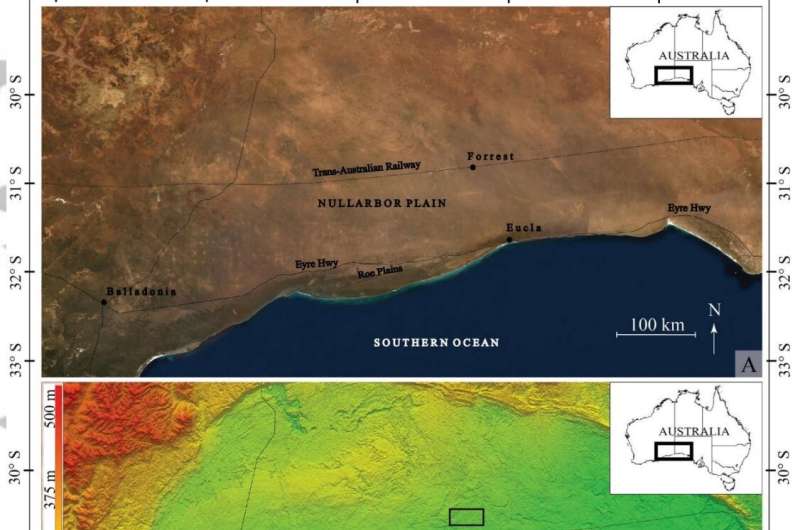
There is an ancient reef-like landform hidden in plain view on the Nullarbor Plain, which has been preserved for millions of years.
Dr. Milo Barham from the Timescales of Mineral Systems Group within the School of Earth and Planetary Sciences said the finding further challenged the idea that the Nullarbor Plain was flat.
The Nullarbor Plain has remained largely unchanged by weathering and erosion over millions of years, making it a unique geological canvas recording ancient history in remarkable ways.
There is a clear remnant of an original seabed structure preserved for millions of years, which is the first of its kind found on the Nullarbor Plain.
The ring-shaped "hill" can't be explained by extra-terrestrial impact or any known processes, but it preserves the original features of the Great Barrier Reef.
Dr. Barham said the discovery was due to new high-resolution satellite imagery which revealed subtle features of environmental evolution.
The channels of long-vanished rivers, as well as sand dune systems imprinted directly into limestone, preserve an archive of ancient landscapes. It's not limited to landscapes. The mummified remains of Tasmanian tigers and complete skeletons of long extinct animals can be found in isolated cave shafts.
The Nullarbor Plain has preserved large quantities of meteorites, which allow us to peer back through time to the beginnings of our solar system.
"These features, in conjunction with the millions of years old landscape feature we have now identified, allow a fascinating deeper understanding of Earth's history."
Dr. Barham is associated with the Institute for Geoscience Research.
The research was led by Dr. Lipar and will be published in the journal Earth Surface Processes and Landforms.
More information: Matej Lipar et al, Enigmatic annular landform on a Miocene planar karst surface, Nullarbor Plain, Australia, Earth Surface Processes and Landforms (2022). DOI: 10.1002/esp.5459